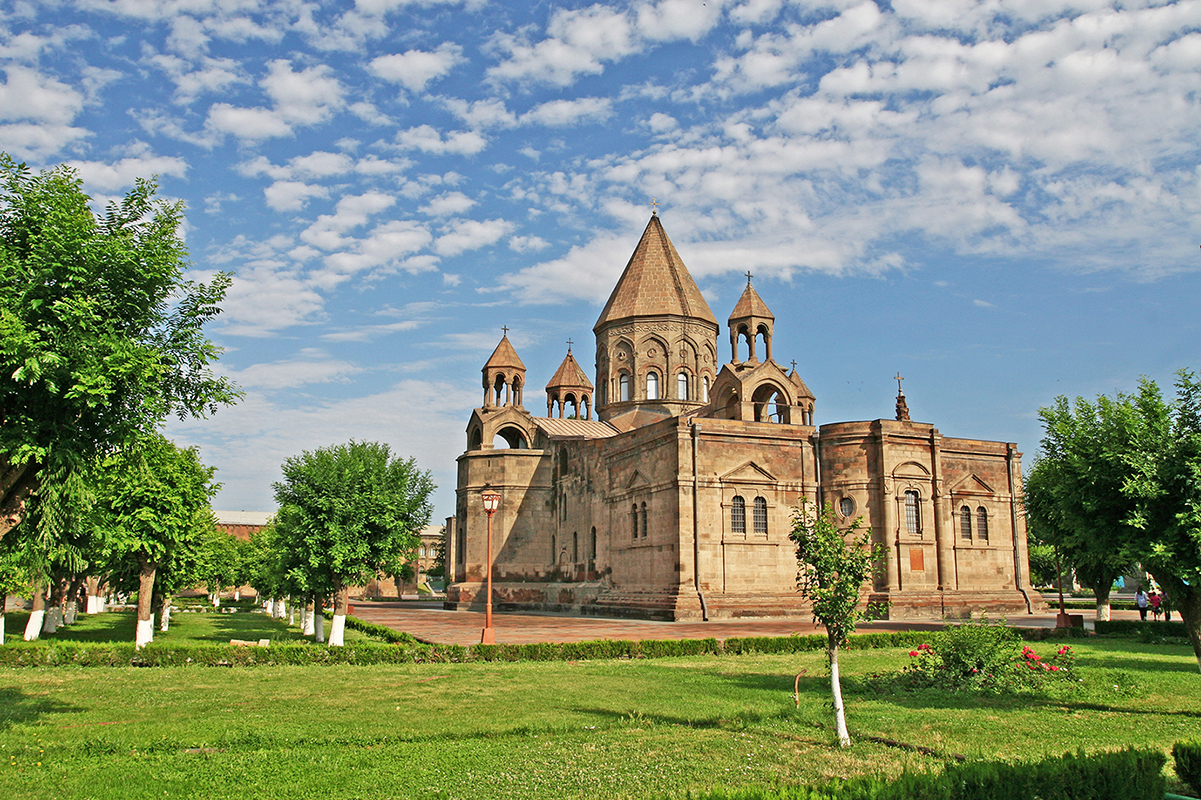The Holy Echmiatsin is situated in the spiritual center of Armenia, in Echmiatsin.
According to the legend, the place of the construction of the temple was shown to the first Armenian catholicos Grigor the Illuminator by Jesus Christ, the only begotten son of God, who appeared in his dream and indicated the place with the hammer stroke. That’s why the place is called “The table of descend,” and the temple is called “the place where the only begotten descended,” Echmiatsin. In 303, after adopting Christianity as a state religion, the king Trdat the Third built the temple.
But before acquiring today’s look, the temple has undergone a lot of changes. It is considered to have been built of wood and without a dome. 80 years later, the temple was damaged by the destructions of the Persian king Shapuh the Second, and the catholicoses Nerses the Great and Sahak Partev twice reconstructed it. At the end of the 5th century the temple was reconstructed once more by the Armenian general in chief Vahan Mamikonyan, and that was the look we have today.
But what was at the place of the temple before?
In 1950s, during the reconstructions to make the altar more stable, remains of a very old building were found out, which the scientists dated back to the 4th century B.C. The remains are bases of stone walls with one meter height and have square plan. For a long time it was considered to have been an atroushan (fire-temple) built by Persians in the 4th century. Three pots full of ashes were found inside the walls, one of them in the centre, the other two under the walls, and this gave the scientists a ground to think that there had been a place for sacrifice, and people made sacrifice keeping the left ashes in the pots. It is interesting that the temperature of this room is unalterable, 20-20˚C, during all the seasons.
It is already 25 centuries that the High Altar has remains of pagan culture, and having been built on them the Holy Temple at the same time symbolizes the victory of Christianity over the paganism and the way of salvation of all Armenians.










